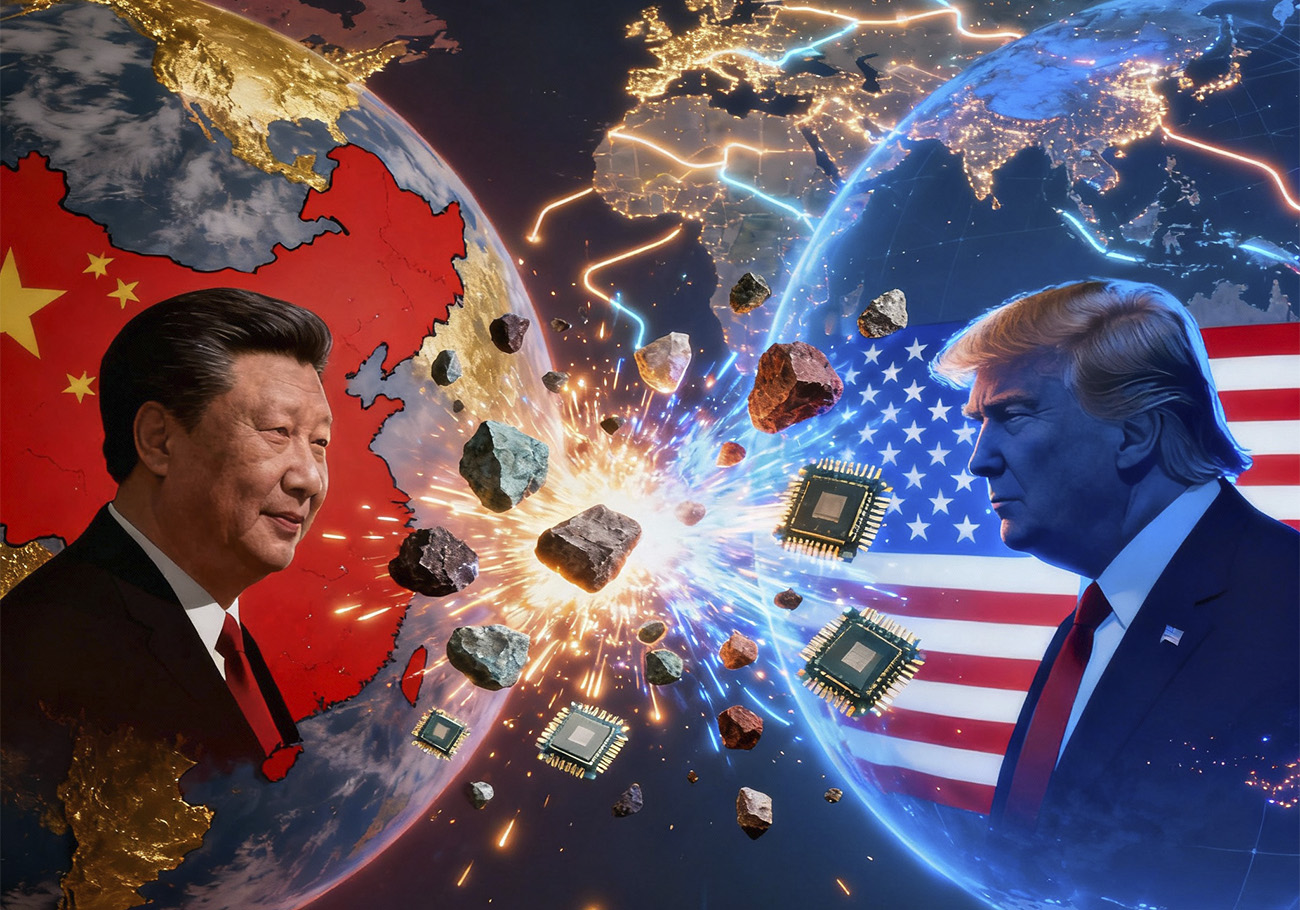






On October 9, 2025, China loudly announced new sweeping measures to control the export of rare earth metals, tightening global access to critical raw materials essential for producing computer chips and defense technologies. For Washington, this news was both unexpected and defiantly bold, coming just two weeks before the scheduled meeting between President Donald Trump and Chinese leader Xi Jinping. Beijing’s sharp move placed Trump in a difficult position: either “swallow” the challenge and attend the meeting — thus “losing face” — or respond by further raising tariffs on Chinese goods, heightening tensions and potentially jeopardizing the long-anticipated meeting, with clear image costs for Trump.
Initially, Trump threatened to cancel the meeting with Xi and impose an additional 100 percent tariff on Chinese goods starting November 1, but soon softened his tone, brushing off the move and remarking that Xi had chosen “bad timing.” As of the article’s writing (October 20, 2025), Trump’s final decision remains unknown, but the meeting is likely to take place. The key question, however, is how confidently China is mastering the techniques of global imperial management — including blackmail, threats, and unilateral national regulations with international reach.
The control over rare earth exports became the culmination of China’s long-term effort to strengthen its bargaining position by mirroring American restrictions on computer chips and other advanced technologies — measures that Beijing views as restraining its progress and continues to lobby the Trump administration to lift.
The “rare earth” war already has a history of its own. On April 2, “Liberation Day,” Trump imposed an additional 34 percent tariff on Chinese goods. Beijing responded by introducing export licensing for rare earth metals used in automobile manufacturing and the defense industry. American companies panicked over the reduced supply of minerals. Ford Motor and other automakers partially halted production. In response, Trump raised tariffs to a minimum of 145 percent, effectively halting significant trade between the two countries.
At meetings between national leaders in the spring and summer of 2025, a fragile truce was restored, under which the U.S. lowered tariffs and China eased restrictions on mineral exports. However, the U.S. continued its technology bans, prompting painful countermeasures from Beijing. A much broader system of mining licenses in China followed the U.S. decision on September 29, 2025, to expand trade restrictions on subsidiaries of any companies listed under its “Entity List,” limiting the technologies they could purchase.
China’s role in rare earth production is well known — it mines about 70 percent of the world’s total and processes roughly 90 percent of these 17 critical minerals. Even the U.S. exports 95 percent of its rare earth materials to China for processing, as it is far cheaper than doing so domestically. Building up U.S. processing capacity could take a decade or more, and obtaining the necessary permits remains a burdensome and slow process in America’s bureaucracy.
The U.S. possesses massive rare earth reserves but lags far behind China and Brazil — partly due to deindustrialization and partly because mining certain materials causes environmental harm that is politically unacceptable. Trump is therefore seeking mineral supply agreements with countries such as Ukraine, the Democratic Republic of Congo, and possibly even Myanmar and Venezuela — all conflict-ridden but rich in rare earth resources.
Under China’s new regulations, starting November 8, 2025, 12 of the 17 rare earth metals will be subject to export controls. Beijing will also impose restrictions on lithium batteries used in electric vehicles and on superhard materials used for mining drills. Chinese companies will now also require licenses to sell abroad any equipment used for mining or separating rare earths.
However, perhaps the most significant expansion of Chinese control will come with the global licensing requirement taking effect on December 1. Under the new rules, companies worldwide must apply for Beijing’s approval to export rare-earth magnets or semiconductor materials containing even 0.1 percent of Chinese-controlled metals. That’s true imperial reach — a clear signal that the new technological hegemon is ready to set its own rules for everyone and punish noncompliance. After steadily consolidating its control over rare earths, Beijing now seems intent on provoking both shock and awe.
According to Chinese analysts, the new regulations requiring companies worldwide to obtain licenses for products containing even trace amounts of Chinese-mined rare earths were designed to eliminate any loopholes in existing controls. The latest round of restrictions is not a temporary measure but a crucial step toward building a long-term protection system for China’s rare earth industry.
American commentators assert that China’s new directive on rare earths is a clear attempt to undermine U.S. and allied efforts to develop their industrial bases, while simultaneously strengthening its own defense and technology sectors. Moreover, Beijing’s rare earth diktat can be seen only as a declaration of intent to dominate the global flow of modern technologies.
China brushed aside Western criticism of its export restrictions as “double standards,” partly because it built its system by mimicking the U.S. export control regime — designed to block adversaries’ access to America’s most advanced technologies. Beijing has also studied loopholes in the U.S. system closely and is now working to close them.
China’s threat to cut off supplies of key materials used in everything from iPhones to medical devices and AI data centers makes these export controls — if enforced broadly — potentially even more destructive for global supply chains. Yet, analysts note that this also makes them harder to defend politically, as countries grow more aware of the risks of relying on Chinese supplies.
Beijing’s new rules are also designed to dissuade other nations such as Malaysia, Myanmar, or Kazakhstan from cooperating with the U.S. to build rare earth supply chains that bypass China. For example, Chinese media recently attacked Pakistan — a close partner — for processing rare earths for Missouri-based US Strategic Metals using Chinese-made equipment.
China is even risking its image as a reliable trading partner upholding globalization — a system that Trump began to dismantle during his first term. The new licensing regime could disrupt practically all semiconductor production worldwide, shattering established supply chains.
Ultimately, the ongoing “rare earth” war is a battle for global dominance through control over supply chains. The U.S. currently dominates semiconductor production, while China uses its grip on rare earths to weaken American supremacy. Each country is building an alternative global supply system for the resources it lacks. But while China has poured billions into its chip industry to boost domestic manufacturers, the U.S. may need years to rebuild its rare earth production and establish a new global network.